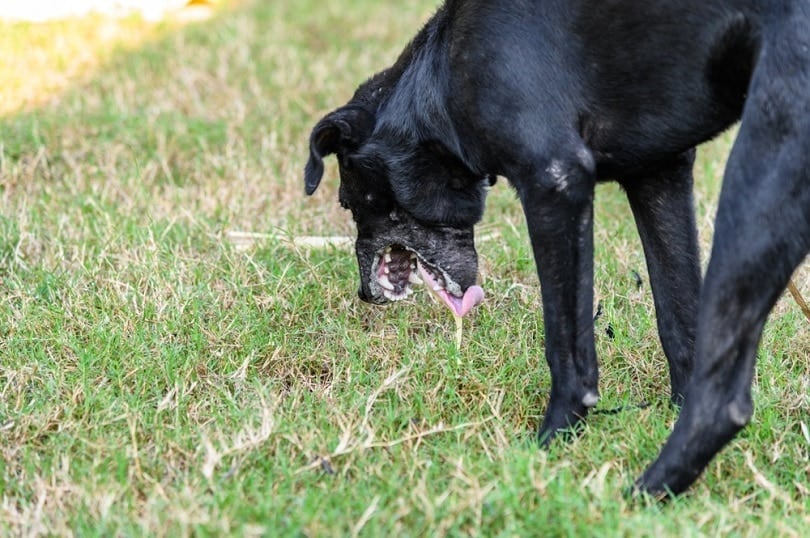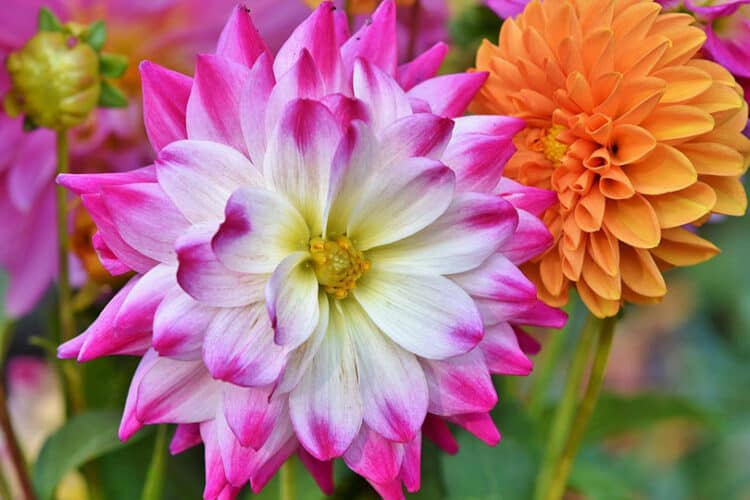As much as we love having plants in and around our home, we love our dogs more, and dogs are notorious for eating things they shouldn’t. When your dog starts chowing down on your plants, there’s probably a moment of panic if you aren’t sure whether the plant is dog-safe or not.
Take dahlias, for example. Are they poisonous to dogs? It turns out they are toxic—but only mildly so. And it’s not just eating them that can cause a reaction in our four-legged friends. Dahlias can also cause irritation to the skin if it comes in contact.
No one is quite sure what it is about dahlias that cause skin irritation or upset stomachs in pups. But we do know that for humans, at least, the phototoxic polyacetylene found in dahlias is the likely culprit of skin irritation. So, that could be what causes issues in dogs as well.
What Do I Do If My Dog Eats a Dahlia?
Because any gastrointestinal discomfort or skin irritation caused by dahlias should be mild (unless your dog is particularly susceptible to whatever it is in dahlias that causes problems), you shouldn’t need to do anything really. Just keep a watch to make sure the discomfort or irritation clears up in a day or two, and keep them as comfortable as possible.
Symptoms of dahlia poisoning can include:
- Blisters
- Itchiness
- Skin irritation
- Rashes
- Red patches on the skin
- Vomiting
- Diarrhea
- Stomach pain
However, if the stomach upset or skin irritation has not gone away in a day or so, you’ll need to visit your vet. Your vet may induce vomiting or flush the system with fluids to get rid of any lingering dahlia substances to clear the health issues up.

How Can I Keep My Dog from My Dahlias?
It can seem like an impossible task to keep our dogs from eating items they shouldn’t, but there are ways you can do so.
When it comes to dahlias, the simplest solution is to not have them inside the home. If there’s no flower, your dog can’t eat it! If that isn’t an option, though, you can instead keep dahlias out of reach of your dog by placing them in higher spots around the home (hanging pots, tall shelves, etc.) or keeping them in an area of the house your pet isn’t allowed into.
If the problem is dahlias in your garden, it’s a bit more challenging to deal with but still doable. One thing to try is netting or something similar around the dahlias, so your pup can’t get to them. You can also try making the flowers smell bad to your dog by spraying white vinegar around them or making them less palatable by sprinkling red pepper or powdered mustard around them.
Finally, the last option is to train your dog to stay away from plants or your garden. This option will take a little time, but training your dog isn’t hard, so it might be the best option. Though it’s better to begin training dogs when they are young, don’t worry if your dog is older. You can still train them not to eat plants; it just might take a bit longer than it would for a young dog.
Final Thoughts
Dahlias are toxic to dogs, but you don’t need to worry too much if your dog has eaten one. This is because dahlias only cause mild reactions in dogs, such as an upset stomach or a bit of skin irritation. If your dog has come into contact with this plant, simply watch them for a day or two to ensure symptoms go away on their own. If your dog is still displaying symptoms of dahlia poisoning after a day or so, you’ll want to get them to a vet.
You can also keep your furry friend away from dahlias altogether to avoid the risk of dahlia poisoning. The simplest way is by eliminating the plant from your home, but you can also try placing it out of puppy’s reach or making it smell or taste bad. However, training your dog not to eat plants may be the best option.
Featured Image Credit: Pixabay














